How to Create a Step-by-Step Local SEO Strategy Guide for 2023
If you’re a small business owner, then you know how important it is to have a strong online presence. But with so many businesses competing for the same attention, it can be challenging to stand out. That’s where local SEO comes in. By optimizing your website for local search, you can improve your chances of being found by potential customers who are searching for products or services in your area. In this guide, we’ll show you how to create a step-by-step local SEO strategy for 2023.
Introduction
Local SEO is a marketing strategy that focuses on optimizing your website to increase your visibility in local search results. It’s essential for businesses that rely on local customers to drive sales. In this guide, we’ll show you how to create a step-by-step local SEO strategy for 2023 that will help you attract more local customers and grow your business.
What is Local SEO?
Local SEO is a form of search engine optimization that focuses on optimizing your website for local search queries. This includes optimizing your website for location-specific keywords, building local citations and backlinks, and optimizing your Google My Business profile.
The Benefits of Local SEO
The benefits of local SEO are numerous. Here are just a few:
- Increased visibility in local search results
- More targeted traffic to your website
- Increased brand awareness in your local community
- More foot traffic to your physical location
- Higher conversion rates from local customers
The Importance of Keyword Research
Keyword research is the foundation of any successful local SEO strategy. Before you can optimize your website for local search, you need to identify the keywords that your target audience is using to find businesses like yours. There are many tools available for keyword research, including Google’s Keyword Planner, Ahrefs, and SEMrush.
On-page Optimization
On-page optimization is the process of optimizing the content and structure of your website to make it more search engine friendly. Here are some key on-page optimization strategies for local SEO:
Title tags and meta descriptions are HTML elements that provide information about the content of your website to search engines. Make sure that your title tags and meta descriptions include your location-specific keywords.
URL structure
Your website’s URL structure is also an important factor in local SEO. Include your location-specific keywords in your URL structure, and make sure that your URLs are descriptive and easy to read.
Header tags (H1, H2, H3) are used to structure the content on your website. Make sure that your location-specific keywords are included in your header tags.
Content optimization
Finally, make sure that your website’s content is optimized for your location-specific keywords. This includes adding your keywords to your content, but also ensuring that your content is high-quality and engaging for your target audience.
Off-page Optimization
Off-page optimization is the process of building links and citations to your website from other reputable websites. This helps to establish your website as a trusted authority in your industry and location. Here are some key off-page optimization strategies for local SEO:
Building local citations
A local citation is any online mention of your business’s name and address, including directories, review sites, and social media platforms. Make sure that your business information is accurate and consistent across all of these platforms.
Building backlinks
Backlinks are links from other websites to your website. They are a crucial factor in search engine rankings. To build backlinks, reach out to other local businesses and offer to write guest blog posts or collaborate on content. You can also create high-quality content that other websites will want to link to.
Google My Business Optimization
Google My Business is a free tool that allows businesses to manage their online presence on Google, including Google Search and Google Maps. Optimizing your Google My Business profile is essential for local SEO. Here are some tips:
- Claim and verify your Google My Business listing
- Optimize your business information, including your business name, address, phone number, and website
- Add high-quality photos of your business
- Encourage customers to leave reviews on your Google My Business profile
Local Schema Markup
Schema markup is a code that you can add to your website to provide search engines with additional information about your business, such as your business type, address, phone number, and hours of operation. Adding local schema markup to your website can help search engines understand your business better and improve your visibility in local search results.
Mobile Optimization
More and more people are using their mobile devices to search for local businesses. It’s essential to ensure that your website is optimized for mobile devices. Make sure that your website is mobile-friendly and loads quickly on mobile devices.
Tracking and Analytics
Tracking and analytics are essential for measuring the success of your local SEO strategy. Use tools like Google Analytics to track your website’s traffic, and monitor your search engine rankings to see how your website is performing in local search results. Use this data to make adjustments to your strategy and improve your results over time.
FAQs
- What is local SEO? Local SEO is a form of search engine optimization that focuses on optimizing your website for local search queries.
- Why is local SEO important? Local SEO is essential for businesses that rely on local customers to drive sales. It helps businesses stand out in local search results and attract more targeted traffic to their website.
- What are some key on-page optimization strategies for local SEO? Some key on-page optimization strategies for local SEO include optimizing your title tags and meta descriptions, URL structure, header tags, and content.
- What are some key off-page optimization strategies for local SEO? Some key off-page optimization strategies for local SEO include building local citations and backlinks.
- What is Google My Business? Google My Business is a free tool that allows businesses to manage their online presence on Google, including Google Search and Google Maps.
Conclusion
Creating a step-by-step local SEO strategy guide for 2023 can be a daunting task, but by following the tips outlined in this article, you can create a strategy that is effective and tailored to your business’s specific needs. Remember to focus on on-page and off-page optimization, as well as Google My Business optimization, local schema markup, mobile optimization, and tracking and analytics. With a strong local SEO strategy in place, you can attract more local customers to your business and grow your sales.


